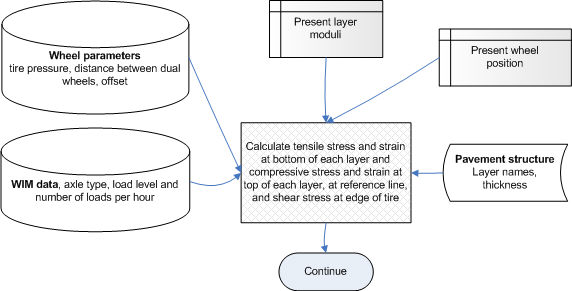
Response Models
In CalME, pavement structures are simplified as multilayer elastic systems when calculating critical responses for predicting fatigue damage and permanent deformation. Accordingly, pavement responses only depend on layer stiffnesses since the Poisson’s ratio of each material in the pavement structure is assumed to remain constant throughout the analysis life. Multilayer elastic theory cannot calculate the strain that drives reflective cracking damage in the new asphalt layer (e.g., overlay), due to cracks in underlying asphalt or stabilized layers, and joints and cracks in underlying concrete layers.
CalME uses Mutilayer Elastic Theory to calculate pavement responses needed to drive fatigue cracking and surface rutting. The response model was implemented by Dr. Jeremy Lea, see www.openpave.org for details.
CalME uses the method developed by Wu (2005) to predict reflection cracking damage. In this method the tensile strain at the bottom of the overlay is estimated using a regression equation developed based on thousands of finite element runs. The calculate critical tensile strains are then used to drive the accumulation of damage in asphalt overlays for reflective cracking prediction.
A flowchart for the response calculation used in CalME is shown below:
